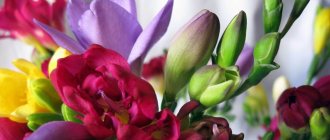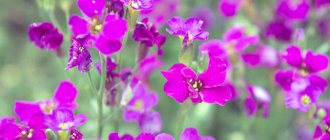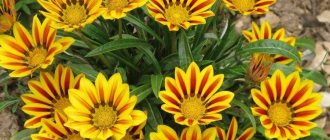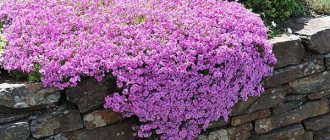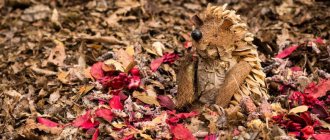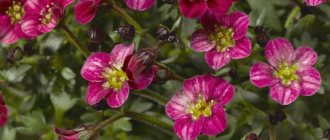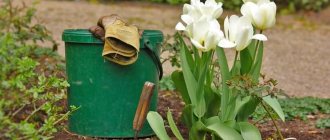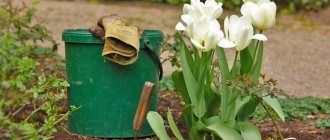Freesia is a heat-loving plant that has taken root in a temperate climate and was brought to Europe from South Africa in the 19th century. It has beautiful flowers with a pleasant fresh aroma, thanks to which it has earned recognition among florists, landscape designers and perfumers. Lovers of indoor greenery also did not ignore the elegant freesia, because it can be planted on the windowsill at home.
When it blooms
The appearance of buds depends on the time of planting. For example, if you plant freesia in October, it will bloom in February. It turns out that in an apartment the Cape lily of the valley can delight you with fragrant flowers at any time of the year.
An outdoor plant is planted based on the weather conditions of a particular region. Usually this is mid-April. Buds appear in August and last 4-6 weeks. If the autumn is warm, flowering may last until mid-October.
Usage
Freesia flower fragrance oil is suitable for use in oil burners, aromatizers and vaporizers. It is also used to refragment pot liquors. Often the aroma of various varieties can be found among air fresheners. Freesia essential oil is used in aromatherapy, soap production, massage oils, bath oils, etc.
Similar articles:
Clematis - photos and descriptions of varieties, features...
Alyssum: description of popular species, features...
What are the correct names for small roses: description and...
Varieties
The genus includes 16 species. Thanks to the work of breeders, there are even more varieties. There are hybrids of truly rare shades and even with double petals!
Freesia Armstrong
It was Armstrong's flower that started species diversity. It is named after the breeder who sent the bulbs from South Africa to England. This is the tallest of the freesias. The stem grows up to 80 cm. Each stem has 4-5 bells. There are different colors: yellow, orange, red, lilac, purple.
Freesia hybrid
Obtained as a result of crossing. The bush grows up to 60 cm. Flowers are 5 cm in diameter. Racemose inflorescences contain about 10 buds. Petals can be smooth and terry, plain or have color transitions. Shades: dazzling white, purple.
The most popular varieties
Freesia Double Blue
Double Blue Freesia is a delicate, loosely flowered perennial plant (usually grown as an annual) with fragrant double blue flowers that bloom in single-sided clusters on leafless, arching, sinuous stems. This blooming beauty, surrounded by wedge-shaped herbaceous foliage, is ideal for flower beds and borders, providing bright, rich color and contrast to the area.
Freesia Double Pink
Double Pink Freesia is a delicate, perennial flower often grown by florists to create beautiful bouquets with fragrant double pink flowers that bloom on sinuous stems. The height of the plant rarely exceeds 30 cm, does not require special care, and reproduces well from bulbs.
Freesia Double Yellow
Freesia Double Yellow has a bright, golden or honey hue. The perennial is widely grown commercially for sale in pots and in bouquets. The sword-shaped leaves have a soft green color. A cut flower can stand in water without fading for up to 3 weeks. The plant reaches a height of 46-60 cm, grows best in open sunny meadows, but also tolerates shade well.
Freesia Single Blue
Blue freesia is an annual plant with fragrant, trumpet-shaped blue flowers borne on a long, leafless stem. A charming little flower reaches a height of 45-50 cm. It feels comfortable in moist, well-drained soils.
Freesia Alba
Alba - Freesia flowers are bright white, grow easily in cold climates and survive even in windy coastal areas. A special feature of the variety is small yellowish spots on each petal of the double bud. The flower is located on a strong stem 45-50 cm long.
Freesia Acapulco
Acapulco has bright orange-red petals with very prominent veins and a bright yellow bud center , making it unique and interesting to florists. Ideal for growing in vases and containers outdoors or on an apartment windowsill.
Freesia Baston
A fairly new variety that produces a flower with double petals of bright orange color and a dark yellow center. Most often grown commercially in greenhouses for sale.
Freesia Bordeaux
Bordeaux freesia has dark red petals and a bright yellow bud center edged with white. The unique color contrast makes Bordeaux a great addition to any garden bed with other plants.
Freesia Cote d'Azur
A beautiful lavender-purple flower, the petals of which fade towards the center into white or, rarely, a soft yellow hue. The stem is always perfectly straight, reaches a height of 40-50 cm. Prefers full sun and moist, well-drained soil.
Freesia Duet
This flower is unique in that it has a delicate, raspberry-pink color, with one or more red spots on each petal. Gardeners plant this variety along borders or form flower beds, combining them with roses. Freesia is often called terry mix, although this name refers to a mixture of seeds of different shades.
Growing at home
You can also buy freesia bulbs for planting in a city apartment.
Priming
Cape lily of the valley loves moisture-absorbing loose soils. The bottom of the pot drains well. The soil for freesia in a pot should contain turf, humus, peat, and sand. If possible, you need to measure the acidity of the soil - the flower does not like an acidic environment.
Landing
- For planting, choose the largest tubers - 5-9 cm. Before planting, the bulbs are cleaned of old scales, soaked in a disinfectant solution for 1 hour, and washed with running water.
- The pot is chosen to be at least 15 cm in diameter. It is also disinfected with soap or calcined water.
- For drainage, the bottom is covered with expanded clay or pebbles. Next, the prepared soil is filled in.
- The number of bulbs planted depends on their size. The main thing is that the distance between them is 7-10 cm.
- If the bulbs were not previously sent for storage, the pot is kept for 8 weeks in spartan conditions: at a temperature of 13-15°C and without watering.
After 40-50 days, inflorescences will form.
Botanical description
Freesia (Cape lily of the valley) is a fragrant, herbaceous, beautifully flowering perennial. The plant belongs to the iris family. Brought to Europe from the unique ecosystem of the former Cape Province in South Africa. The aroma of the flower is really similar to the aroma of lily of the valley, moreover, freesia lasts for a long time, more than a week, when cut.
The flower shows amazing diversity in sizes: from miniature (25 cm) to spectacular, a meter tall. Freesia leaves are long (up to 20 cm), narrow, with a wide vein in the center.
On one peduncle growing from a corm, there are up to 5 flowers; the inflorescence is loose, one-sided. The flowers are tubular, 3-5 cm in length, shaped like a funnel, expanding from a narrow base to 6 cm in diameter.
Home care
Following simple rules allows you to grow freesia at home.
When mass shoots appear, the plant is transferred to a warm room.
Lighting
When the flower buds are forming, the daylight hours should be 12 hours, and after germination - all 14.
In winter, the Cape lily of the valley needs additional lighting.
At any time of the year, freesia should be protected from direct sunlight.
Temperature
When seedlings appear, the temperature should be closer to 22°C.
Failure to comply with this condition may result in the plant not blooming. Therefore, many consider freesia capricious, because it is quite difficult to ensure such a temperature regime in an apartment.
After tying the bottles, the temperature can be increased.
Watering and humidity
It is useful to place containers of water near the plant. If the room is large, a humidifier is welcome.
Cape lily of the valley does not tolerate stagnant water. Therefore, the soil in the pot is often mulched with peat that is neutral in composition.
Support
Almost all types of freesia grow crooked without support. As soon as the first leaves appear, the flower needs help.
Temperature
Before planting, it is important to monitor the temperature: the best option is to warm the soil to at least 10 degrees Celsius. But too high temperatures are also detrimental to the plant: already at 20 degrees, a redistribution of nutrients occurs to the leaves instead of flowers, and an increase in temperature above 25 degrees threatens a complete absence of flowering. The ideal regime for comfortable freesia flowering is 18 degrees during the day and at least 15 at night.
Freesia loves moderate air temperatures
Growing in the garden
When the right conditions are created, freesia will willingly settle in the flowerbed.
Selecting a location
When choosing a planting site, you should remember the growing conditions of this flower in the wild. Cape lily of the valley should be planted under trees and dense shrubs to avoid drafts and direct sunlight.
Planting by seeds
Freesia is not often planted with seeds. There are several conditions:
- Seeds are selected zoned. They are disinfected in a solution of potassium permanganate.
- They are sown in early March at a depth of 8-10 cm. The top is covered with neutral peat.
- Water moderately.
- The seedlings are fed with organic matter.
Planting with bulbs
More reliable way. Freesia bulbs are planted according to the following rules:
- On soft soils, the bulbs are placed at a depth of 10-12 cm, on compacted soils - 5-6 cm.
- Planting is carried out as soon as warm weather sets in. The soil should warm up to 12°C, and the air - to 15°C. In the middle zone - this is mid-May. If frosts occur, the seedlings are covered with a protective film.
- The distance between the holes is 8 cm.
- Bulbs grown in peat pots are planted with them.
- In the middle zone, planting is not done before winter; tubers are also not left to overwinter in the ground.
Preparing for winter storage
After flowering in freesia, like all bulbous plants, the above-ground part dries out until it dies completely. In this case, the tubers are dug up and sorted. It is better to replace bulbs older than 2 years with young ones. Their roots are lightly trimmed and left to dry for up to two months, at a temperature of 25° to 30° C.
After drying, the planting material can be removed to a cool, dark room or stored in the refrigerator. The main requirement for safety is that the temperature should not fall below 4°–5° C.
Outdoor care
After planting freesia, care in the open ground includes:
- weeding;
- watering;
- fertilizer;
- trimming and tying.
Watering
Cape lily of the valley prefers abundant watering, but not frequent. You need to make sure that the top layer of soil is dry. Water is poured “at the root”. You should avoid getting water on the buds - the flower will turn sour!
On hot days, Cape lily of the valley can be sprayed.
During the period of bud formation, watering is increased, and after flowering is over, it is reduced.
Top dressing
Freesia is fed with potassium-phosphorus and natural organic fertilizers.
The first feeding is carried out 2 weeks after planting in open ground. The second time is fed during the formation of buds. The third time, fertilizing is appropriate during the period of maximum flowering.
Trimming
To encourage the reappearance of flowers, Cape lily of the valley is pruned. When the brush has faded, but there are no fruits yet, make a cut 1 cm below the flower.
Leaves can be removed once they turn yellow or brown.
Diseases and pests
Diseases happen due to improper care. Often the flower is affected by:
- rot;
- Fusarios;
- aphid;
- spider mite
The main method of prevention is disinfection of the bulbs before planting.
If the leaves suddenly turn yellow or become shriveled, you should treat the soil with a fungicide.
If the flowers begin to die, the Cape lily of the valley will have to be removed to avoid infecting the “neighbors.”
Lovers of indoor flowers could not ignore the incredible freesia plant. Cape lily of the valley appears on windowsills precisely for the sake of flowers in winter. And if desired, the dacha plot can be turned into a spring forest fragrant with lilies of the valley.
